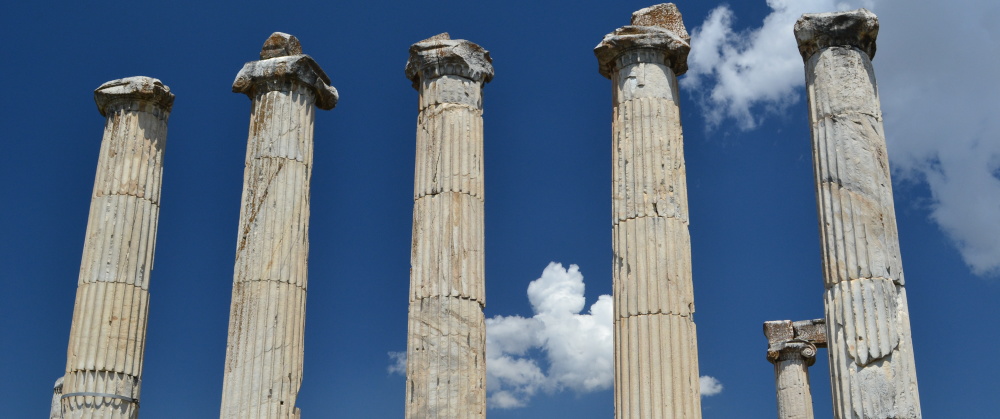What if there was an inscription that provided records of actual sacrifices offered in Rome by one of the city’s colleges of priests?
What if this epigraph dated to the time of the composition of the New Testament documents?
Would such a source illuminate not only public religion in Rome but also public religion in the Roman colonies mentioned in the New Testament like Corinth, Philippi, and Pisidian Antioch?
Such an inscription does in fact exist!
It is called the Arval Acta after the priestly college who offered the sacrifices mentioned in the epigraph, the Arval Brothers. The Arval Brothers were a priestly college that consisted of twelve men who served for life and who were drawn from senators in Rome. They served the Roman deity Dea Dia who was the goddess of grain and fertility. The Arval Brothers had a cultic site in a sacred grove of trees atop a hill 7-8 km west of Rome. Temples of Dea Dia and other goddesses were on the hill and at its bottom a bath and imperial temple in which the Arval Brothers gathered to recline at sacred banquets.

Each year the priestly college appointed a president (magister) whose main duty was to offer a number of sacrifices throughout the year. Most of these were directed to Dea Dia but in the imperial period (post 31 BCE) a number of these sacrifices either were offered to deceased and officially deified emperors called divi or to the gods on behalf of the reigning emperor and his family, especially for his health and for celebrating important days like his birthday.
To provide an example:
A(nte) d(iem) (undecimum) k(alendas) Octobres (vacat)| Taurus Statilius Corvinus promagister collegii fratrum arṿ[ali]um| nomine, quod eo die C. Caesar Augustus Germanicus conṣ[ensu]| senatus delatum sibi patris nomen recepisset in Cạ[pitlio]| Iovi, Iunoni, Minervae hostias maiores (tres) inmolavit et ad templum| novom divo Augusto unam. (vacat). | Adfuerunt Paullus Fabius Persicus, M. Furius Camillus, Appius Iunius| [Silanus, P. Me]ṃmiuṣ [Reg]ụḷụṣ, C. Cạẹcịṇạ, Ḷ. Ạṇṇịụṣ Ṿịṇịcịạṇụ[s,]| [C. Calpurniu]s Piso. (vacat)
On the eleventh day before the Calends of October (Sept 21, 38 CE), because Caius Caesar Augustus Germanicus received the title father of the fatherland, which was offered with the senate’s consent, the vice president Taurus Statilius Corvinus sacrificed on the Capitoline Hill in the name of the college of the Arval Brothers three adult victims to Jupiter, Juno, and Minerva, and a victim to Deified Augustus at his new temple. Paullus Fabius Persicus, Marcus Furius Camillus, Appius Iunius Silanus, Publius Memmius Regulus, Caius Caecina Largus, and Lucius Annius Vinicianus, and Caius Calpurnius Piso were present (Commentarii fratrum Arvalium 12c lines 83-91; translation D. Clint Burnett).
Each year the president chose to have certain (or all?) their sacrifices recorded in a codex. Beginning from Augustus’s reign (21 BCE) and continuing into the third century CE (241 CE), portions of these sacrifices were inscribed on marble plaques placed in Dea Dia’s temple. Numerous of these engraved marble plaques have survived and they make up the Arval Acta, which are our most important primary source for public Roman religion in the entirety of the Roman Empire.[1]

Currently, I am working through the Arval Acta, translating them from their original Latin, which is no easy task. However, as I work through the text I cannot help but think of the numerous ways in which this inscription could produce nuanced readings of 1-2 Corinthians, Philippians, and Acts of the Apostles as well as refine our understanding of the relationship between Paul and the Roman Empire. Therefore, I want to encourage my New Testament colleagues to pick up this amazing epigraph to expand their understanding of public religion in the Roman Empire and its connections to the New Testament.
[1] For more on the Arval Brothers see Mary Beard, “Writing and Ritual: A Study of Diversity and Expansion in the Arval Acta,” Papers of the British School at Rome 53 (1985): 114-162; John Scheid, Commentarii fratrum Arvalium qui supersunt: Les Copies épigraphiques des protocoles annuels de la confrérie arvale (21 AV.-304 AP. J.-C.) (Rome: École Francaise de Rome, 1998), iii-xxii.
